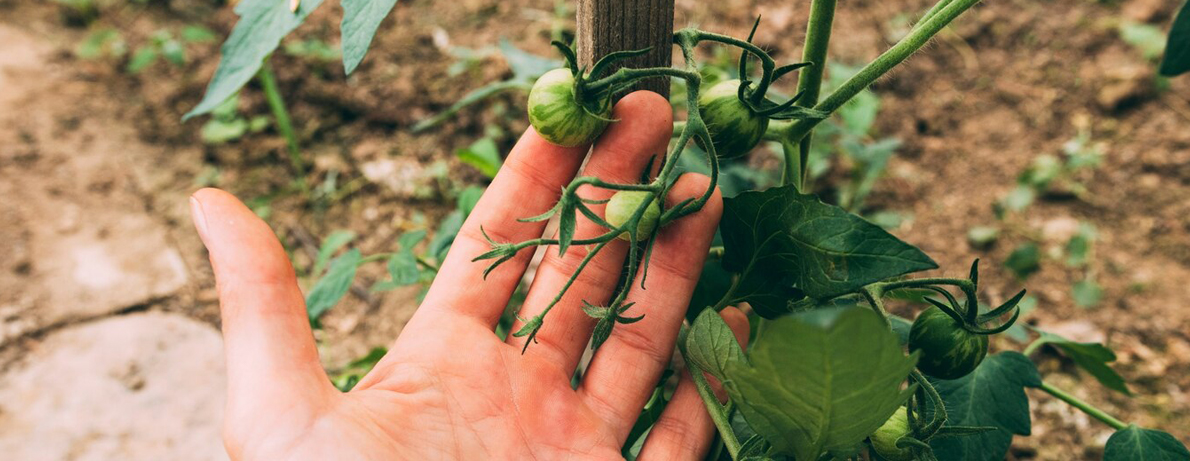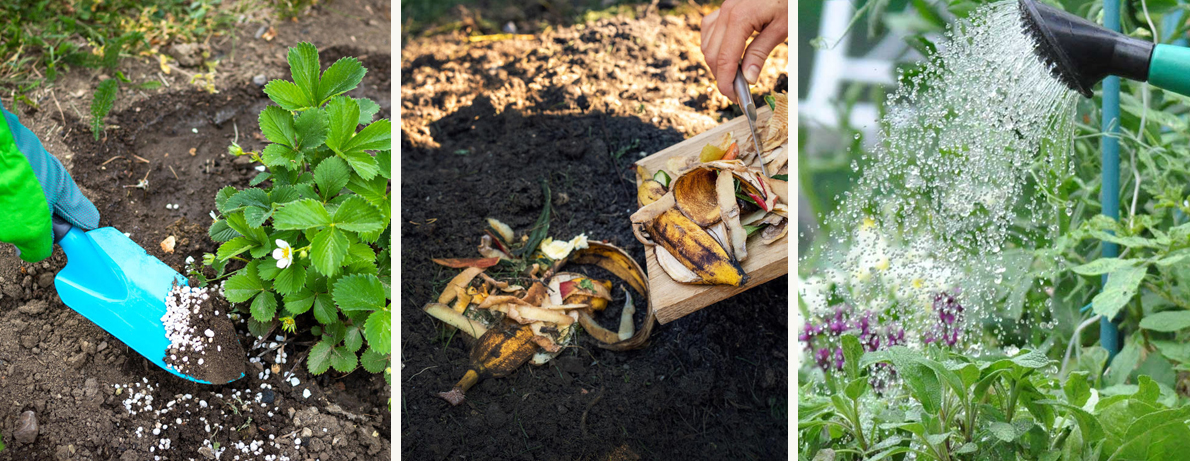Posted by Kelly Jean Reyland
8th Nov 2023
What to feed the garden for best results

There are many ways to feed your plants; the main thing to get right is to use the appropriate fertiliser for the results you want to achieve. In general, fertilisers are split into three categories:
Organic based (animal manure, composted green waste, seaweed etc.), granular or compound (man made), and liquid fertiliser.
Each has it's own pros and cons, so it's important to pick the right food for the right situation.
Organic Based
Improving your physical soil is always going to be a good thing - healthy soil = healthy plants. Organic based materials play a crucial role here. You're mimicking natures own process of improving the soil with plant debris, dead animals etc. breaking down into the soil.
Organic matter breaks down to humus over time and humus improves soil fertility, holds on to nutrients, increases water holding capacity, improves soil structure and feeds soil organisms.
Organic matter is better applied regularly in smaller amounts as it can be high in nitrogen - particularly animal manure.
One thing to be aware of is organic matter generally needs to be aged. For example, fresh manure is very strong and can burn, and fresh bark chips actually take nitrogen from the soil to break down.
Granular or compound
Granular or compound fertilisers are a helpful tool to help meet specific food requirements for growing plants. They have been formulated into tomato fertiliser or bulb fertiliser for example.
They will have different NPK ratings stated on the packet which can direct your choice - we’ll talk more about these later in the blog.
Within this category, granular fertiliser will release as soon as it comes into contact with water. Therefore it's important to follow guidelines for application as too much can burn delicate plant roots and get washed away. This is called leaching - where the fertiliser is washed away before the plant can use it, ending up in streams and rivers, contributing to pollution and wasting your money.
Granular fertiliser is too strong to use in containers and will usually state it is not recommended on the packet.
Compound or slow release fertiliser is a safer option in that it is formulated to release gradually over a stated time period, say 3 months, providing food ‘little and often’ so the plant can use it up and avoid leaching. It is also safe for use in pots.
These man made fertilisers will feed the plant but will not improve your soil.
Liquid fertiliser
Liquid fertiliser are a great tool to get nutrients into a plant quickly. Whether applied to the soil or directly over the leaves, plants will take it up as an instant boost. The downside is that while it is taken up quickly it is also used up quickly so you have to apply regularly, about every 2 weeks if that is the only way you are feeding. Also a safe option for plants in pots.
If you are regularly adding organic materials to your garden, feeding with some man made fertiliser specific to what you are growing and supplementing with a liquid feed, you will have happy, healthy plants that produce well and flower well.

What is NPK on my fertiliser bag and why is it important?
NPK represent the 3 main micronutrients that plants require - Nitrogen (N), Phosphorus (P) and Potassium (K)
The numbers represent the percentages of these nutrients within the fertiliser. There will often be macronutrients and trace elements also added, depending on the plants requirements. Macro nutrients (sulphur, calcium, magnesium etc.) are crucial but generally in tiny amounts compared to the NPK.
What do they do?
Nitrogen
- The building block for growing new stems and leaves
- It helps to make leaves green and helps them photosynthesize
Phosphate
- Root development
- It helps a plant convert nutrients into growth
- Aids in fruit and flower development
Potash
- Helps fruit and flower development
- Helps plants resist drought and tolerate stress
- Encourages strong stems and well developed flowers
- Regulates plant growth so harvested fruit is fully formed, high quality and lasts longer
- It hardens up cell walls of soft, young growth
- It accelerates ripening, increasing flavour and sweetness
It is vital to remember that plants need a combination of all of these nutrients, don’t just look at one as ‘most important’. You can have too much of a good thing so while you can apply nutrients separately, it is safest to apply a balanced fertiliser that has been formulated to tick all the boxes.
What to choose?
Look at what you are growing, what you want to achieve, and whether it's growing in a container or pot. If you’re growing in the garden, you can use any options. If you are in a pot, you need to look at a slow release or a liquid option.
If you want lots of flowers, rose fertiliser is a good option. If you are growing fruit, there are specific citrus and berry fruit formulations and if you are growing a lot of each, it’s worthwhile having them but you can get by using a general fruit fertiliser.
With vegetables, it depends on what you’re growing - green leafy veges need mainly nitrogen but veges like cauliflower and broccoli are actually a flower head and need some potassium in the soil. Using a crop rotation system is a helpful way to manage the nutrient use by the plants, see last months blog for more info.
Feeding is incredibly important for growing a strong healthy garden. Be strategic and work at improving your soil over time with organic matter, using man made options to target nutrients when needed.
Written for Gubba by Kelly Jean Reyland from Garden Advice NZ (www.gardenadvice.co.nz)


























